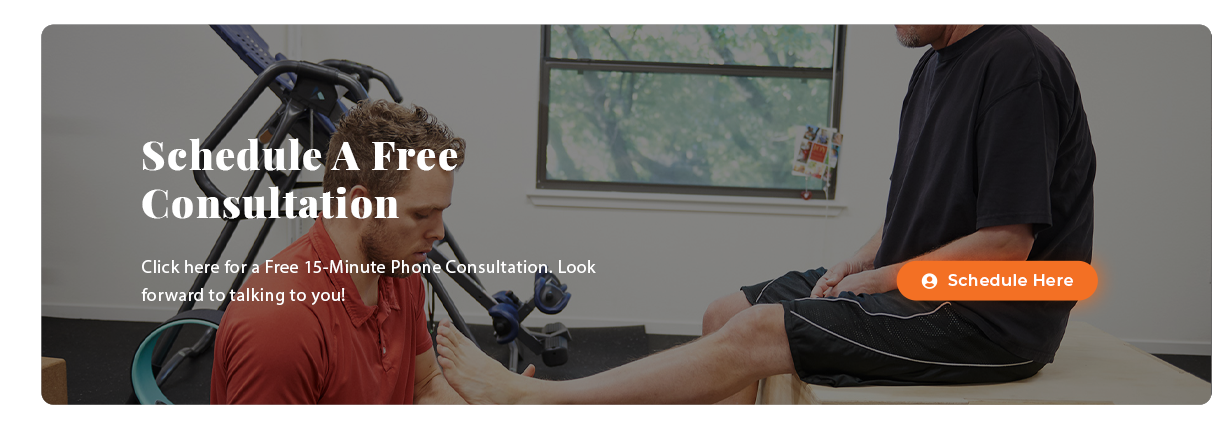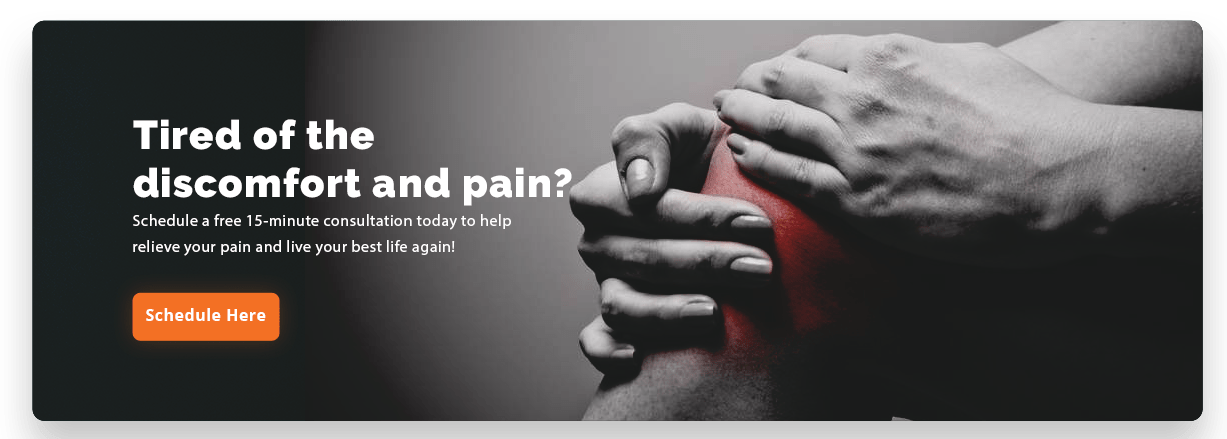No matter how strong we are, no matter how conditioned or physically fit, all of us are subject to pain. And, unfortunately, some of us are more prone to certain types of pain than others. Whether it’s neck pain, pain your hands or wrists, or nagging foot pain, we all want relief.
But perhaps one of the most common and debilitating types of pain is lower back pain. In fact, it’s estimated that over 30 million Americans live with back pain of some kind. And about 80 percent of all people experience lower back pain at some point in their life. Chronic lower back pain can severely limit your ability to work, keep you from engaging in any number of activities, and severely diminish your quality of life. And, if you are suffering from chronic lower back pain, you’re not alone.
Common Causes of Lower Back Pain
There are many reasons we can suffer from lower back pain. Sometimes the pain is relatively mild and temporary, such as from sleeping in an awkward place (like your sofa) or too much time spent bending over pulling weeds or cleaning something on the floor.
However, there are times when we suffer lower back pain because of an injury. This can range from a simple sprained muscle to a damaged disc or bruised vertebrae. are much more uncommon, a fractured bone in your foot, for example. And almost everyone has suffered from the effects of “throwing” their back out. While it is not fully understood what causes this condition, it is quite common and can be extremely painful and incapacitating.
The NIH explains the distinction between short term back pain, long term and chronic back pain,
“Most low back pain is acute, or short term, and lasts a few days to a few weeks. It tends to resolve on its own with self-care and there is no residual loss of function. The majority of acute low back pain is mechanical in nature, meaning that there is a disruption in the way the components of the back (the spine, muscle, intervertebral discs, and nerves) fit together and move.
Subacute low back pain is defined as pain that lasts between 4 and 12 weeks.
Chronic back pain is defined as pain that persists for 12 weeks or longer, even after an initial injury or underlying cause of acute low back pain has been treated. About 20 percent of people affected by acute low back pain develop chronic low back pain with persistent symptoms at one year. In some cases, treatment successfully relieves chronic low back pain, but in other cases pain persists despite medical and surgical treatment.”
Aside from an injury, there are a few other common causes of pain in your lumbar and lower back. Unfortunately, many of these other causes become more prevalent with age. And getting older is something that none of us can avoid no matter how much we work out or careful we are with our bodies.
During normal life activities, the lower back is subject to a lot of mechanical stress and strain. This is largely due to the weight of the upper body, which puts a constant load on the lower back. According to a post at WebMD,
“Supporting all that upper body weight is the spine, which is made up of more than 30 small bones called vertebrae stacked one on top of the other. A spongy piece of cartilage, called a disc, sits between each vertebra. It acts as a shock absorber, preventing the bony vertebrae from grinding against one another.
With age, these cushioning discs gradually wear away and shrink, a condition known as degenerative disc disease. Discs can also tear or become injured. Sometimes the weakening of a disc can put pressure on its jelly-like center. In the case of your back, that pressure can lead to a herniated disc (also called a “slipped disc” or “ruptured disc”), in which the center of the disc bulges.”
A fact sheet from the National Institute of Neurological Disorders and Stroke (NINDS) provides a list of the most common conditions that can cause moderate to severe chronic lower back pain:
- Intervertebral disc degeneration is one of the most common mechanical causes of low back pain, and it occurs when the usually rubbery discs lose integrity as a normal process of aging.
- Herniated or ruptured discs can occur when the intervertebral discs become compressed and bulge outward (herniation) or rupture, causing low back pain.
- Radiculopathy is a condition caused by compression, inflammation and/or injury to a spinal nerve root. Pressure on the nerve root results in pain, numbness, or a tingling sensation that travels or radiates to other areas of the body that are served by that nerve.
- Sciatica is a form of radiculopathy caused by compression of the sciatic nerve, the large nerve that travels through the buttocks and extends down the back of the leg. This compression causes shock-like or burning low back pain combined with pain through the buttocks and down one leg.
- Spondylolisthesis is a condition in which a vertebra of the lower spine slips out of place, pinching the nerves exiting the spinal column.
- Spinal stenosis is a narrowing of the spinal column that puts pressure on the spinal cord and nerves that can cause pain or numbness with walking and over time leads to leg weakness and sensory loss.
Treating Lower Back at Pain and Performance Solutions
We specialize in using manual therapies such as Active Release Technique®, or ART®, to relieve chronic back pain of all types, including lower back pain. Once we have determined the root cause of your pain, we can use ART® together with other types of exercise and physical therapy, along with rest, ice and heat to relieve the pain.
Active Release Technique® is a clinical manual therapy that was developed and specifically designed to relieve musculoskeletal pain and dysfunction. A movement-based therapy, it combines patented hands-on treatments along with client movement to break up scar tissue, separate adhesions in muscles, relieve entrapped nerves and restore muscle length.
ART® help reduce or even eliminate chronic and acute pain.
When you come to your first appointment, we want to learn about your present discomfort as well as any history of discomfort. Treating and relieving your lower back pain begins once we understand where and how your pain started. Because our bodies will compensate for pain to allow us to function during our day, the pain can shift around and lead to other forms of pain. This is especially true for back pain.
After conducting a full examination we can determine which form of treatment is best suited to get you on a path of pain relief. Your trust in us is key, as is your honesty. Ultimately, getting your body healthy and working properly is the only way to achieve total recovery. So, don’t hesitate to reach out. We are here to help and will answer any questions that you may have.
Our goal is to work through the sequence of pain and dysfunction in order to get your body healthy and working properly, and to achieve total recovery. Don’t hesitate to reach out. We are here to help and will answer any questions that you may have. You can reach us at (707) 636-4404 or by filling out our online contact form.
FAQs About Lower Back Pain and Active Release Technique (ART®)
What are the most common causes of lower back pain?
Lower back pain can be caused by a variety of factors, including poor posture, muscle strains, herniated discs, or degenerative disc disease. Everyday habits like sitting for long hours or improper lifting can also contribute. As we age, wear and tear on the spine becomes a significant factor, leading to chronic conditions like spinal stenosis or sciatica.
How does Active Release Technique (ART®) help with lower back pain?
ART® targets the root cause of pain by breaking up scar tissue and relieving tension in muscles and soft tissues. Using precise movements and manual pressure, ART® restores proper alignment, increases blood flow, and improves mobility. It’s particularly effective for conditions like sciatica and herniated discs, offering relief without invasive procedures.
Can lower back pain become a chronic issue?
Yes, acute lower back pain can turn into a chronic condition if not properly treated. Chronic pain often persists for 12 weeks or more and may stem from unresolved injuries, poor spinal alignment, or repetitive stress. Early intervention, such as ART® and physical therapy, can prevent long-term discomfort.
What are the symptoms of a herniated disc?
A herniated disc often causes sharp, shooting pain in the lower back that can radiate down the legs, a condition known as sciatica. You might also experience numbness, tingling, or muscle weakness. These symptoms occur when the disc presses against nearby nerves, disrupting normal nerve function.
Is lower back pain more common as we age?
Absolutely. As we age, spinal discs lose elasticity and hydration, leading to conditions like degenerative disc disease. The natural wear and tear on the spine, combined with reduced muscle strength, increases the likelihood of experiencing chronic back pain.
How does posture affect lower back pain?
Poor posture, such as slouching or hunching over a desk, places additional strain on the spine and lower back muscles. Over time, this can lead to pain, stiffness, and even structural issues like spinal misalignment. Improving posture can significantly reduce lower back discomfort.
What is the difference between acute and chronic lower back pain?
Acute lower back pain lasts a few days to weeks and often resolves with self-care. Chronic pain persists for 12 weeks or longer, even after the initial injury or cause has healed. Chronic conditions may require targeted treatments like ART® to manage pain effectively.
Can Active Release Technique® be used alongside other treatments?
Yes, ART® is highly versatile and can complement other therapies like physical therapy, massage, and chiropractic care. Combining ART® with exercises, stretching, and lifestyle changes can accelerate recovery and improve overall spinal health.
What are some exercises to prevent lower back pain?
Core-strengthening exercises like planks, bridges, and gentle yoga stretches can support your spine and reduce back pain. Incorporating regular movement, proper lifting techniques, and maintaining a healthy weight are also essential in preventing future episodes of discomfort.
When should I see a professional for lower back pain?
If your pain persists for more than a few weeks, worsens over time, or is accompanied by symptoms like numbness, weakness, or difficulty walking, it’s time to seek professional help. Therapies like ART® can address the underlying causes and offer lasting relief.



